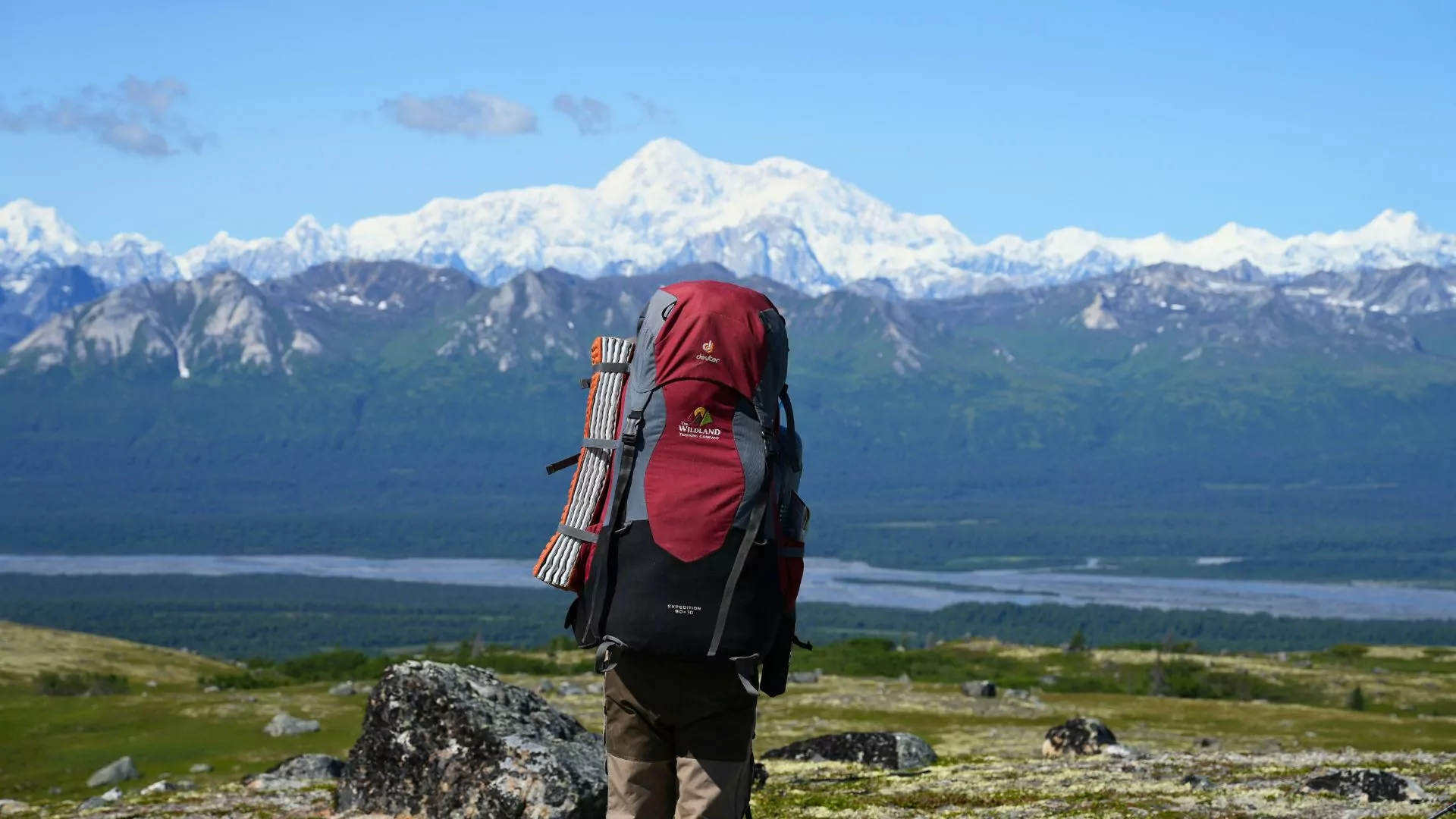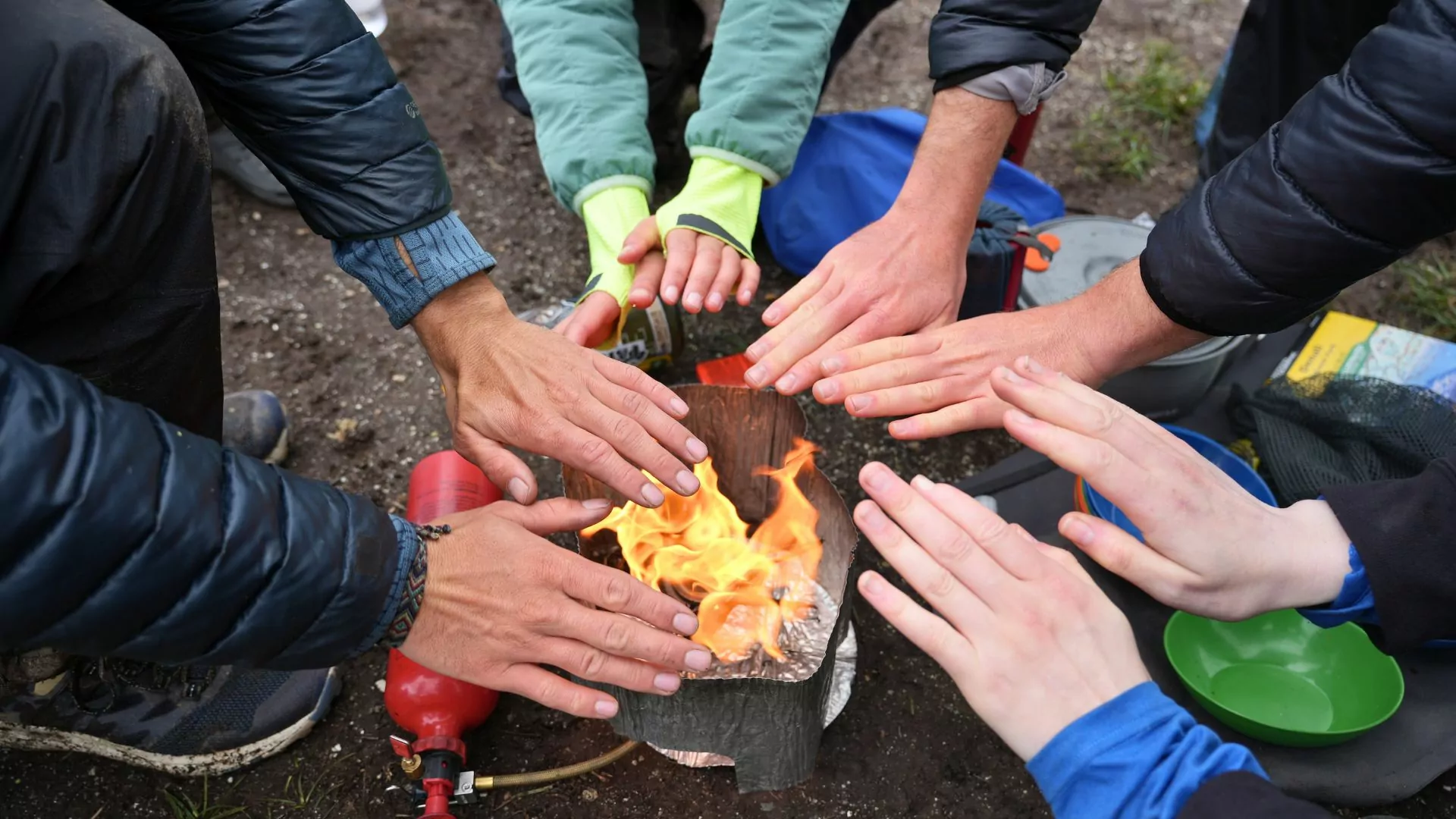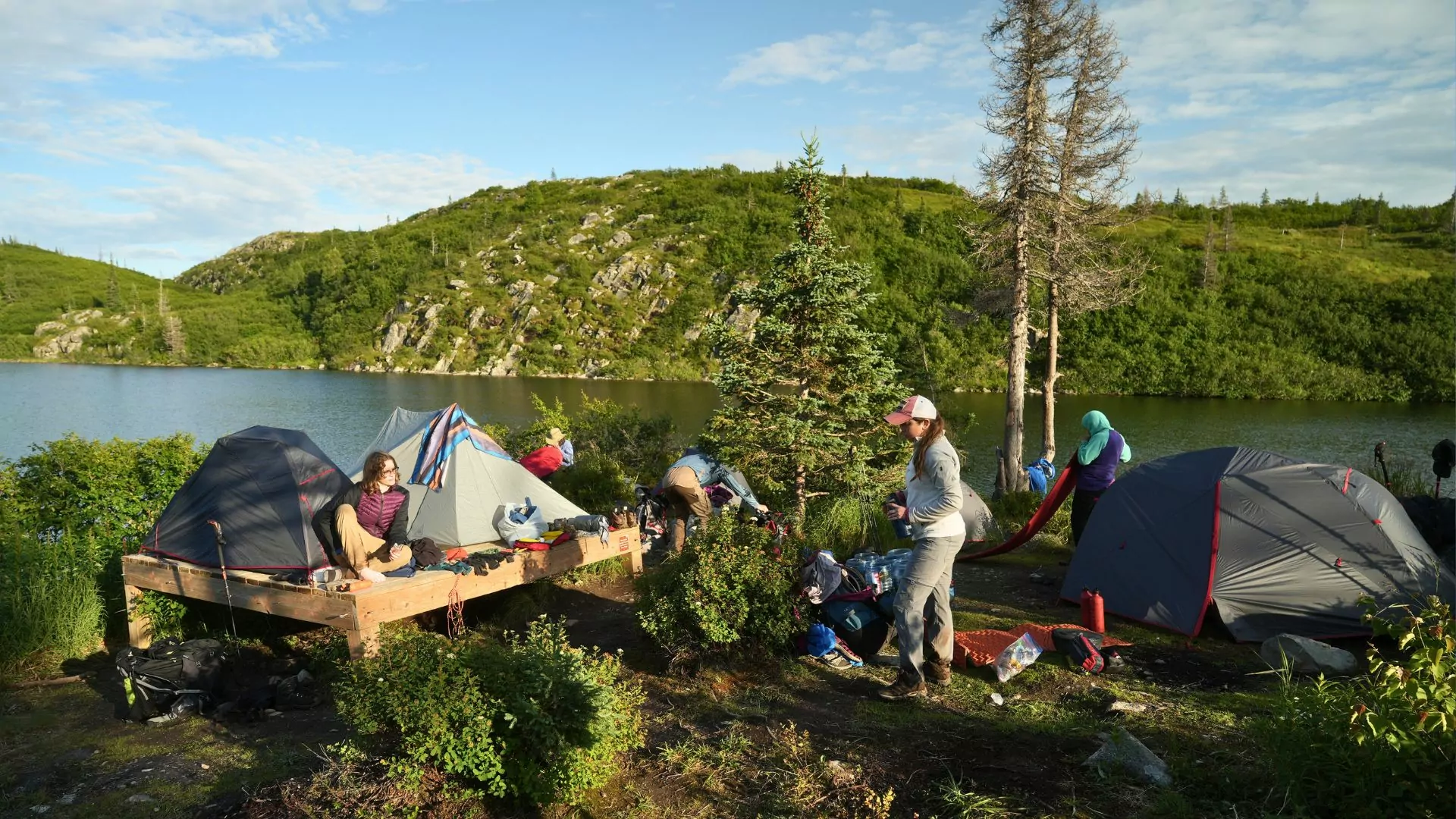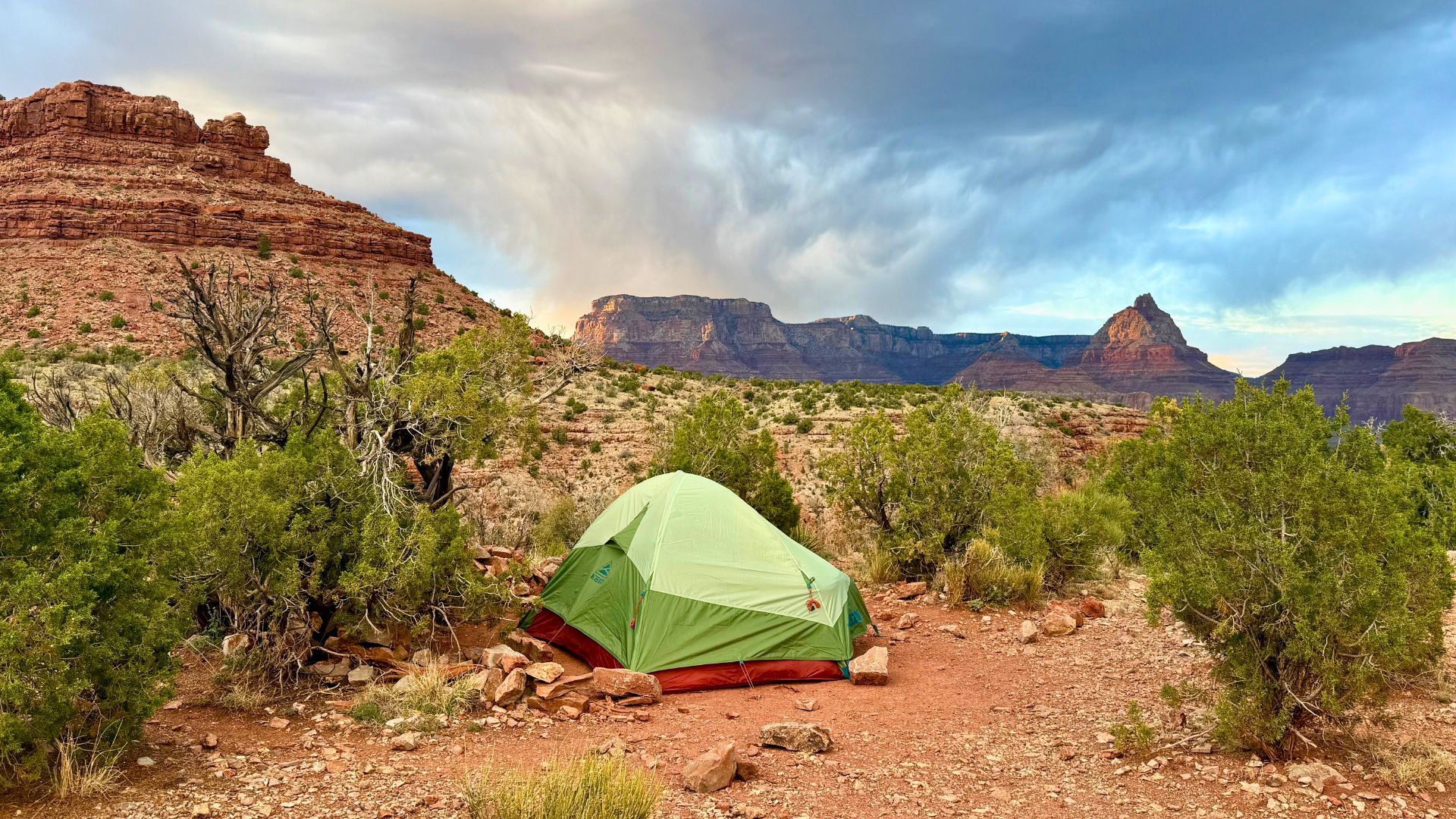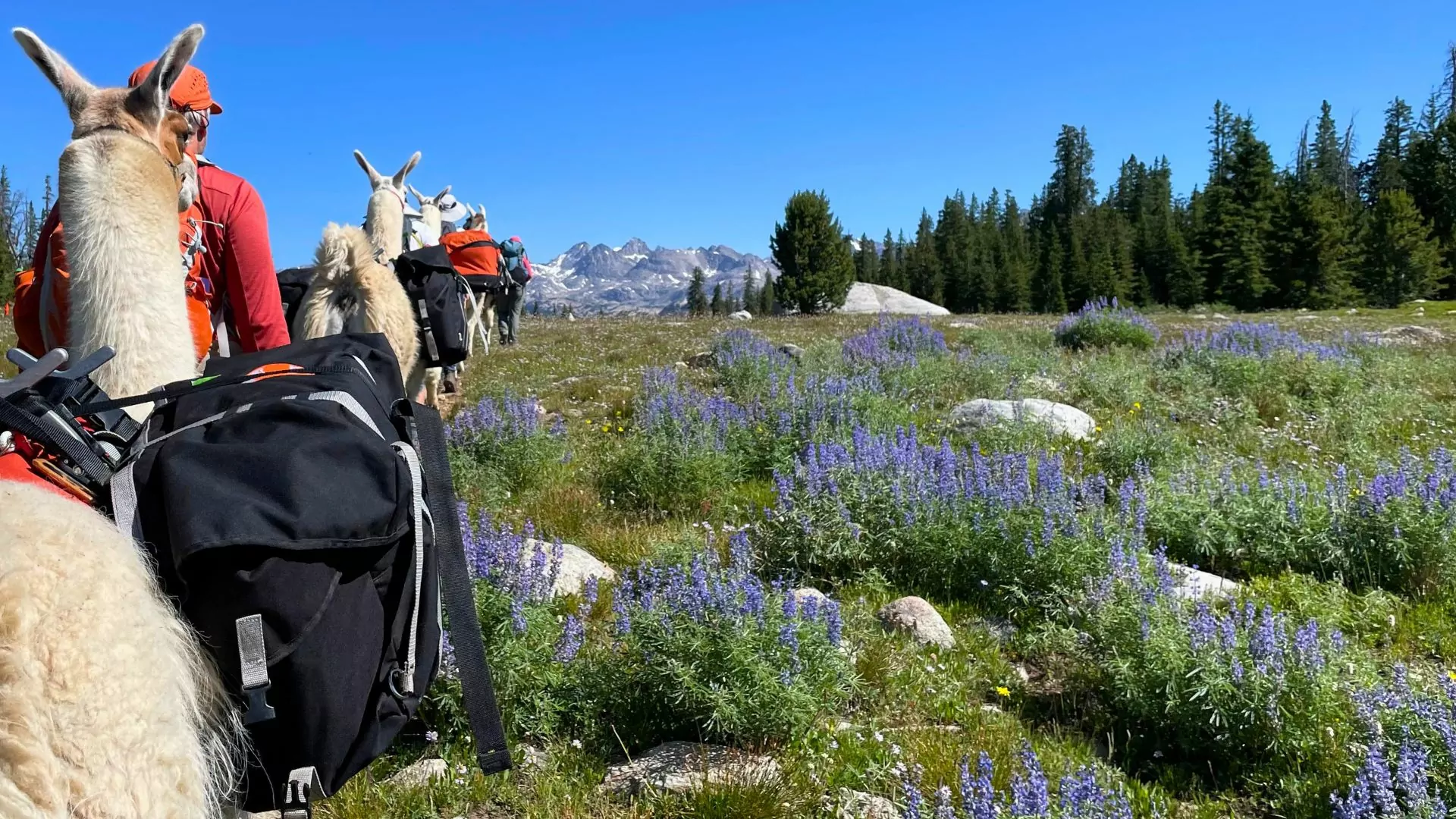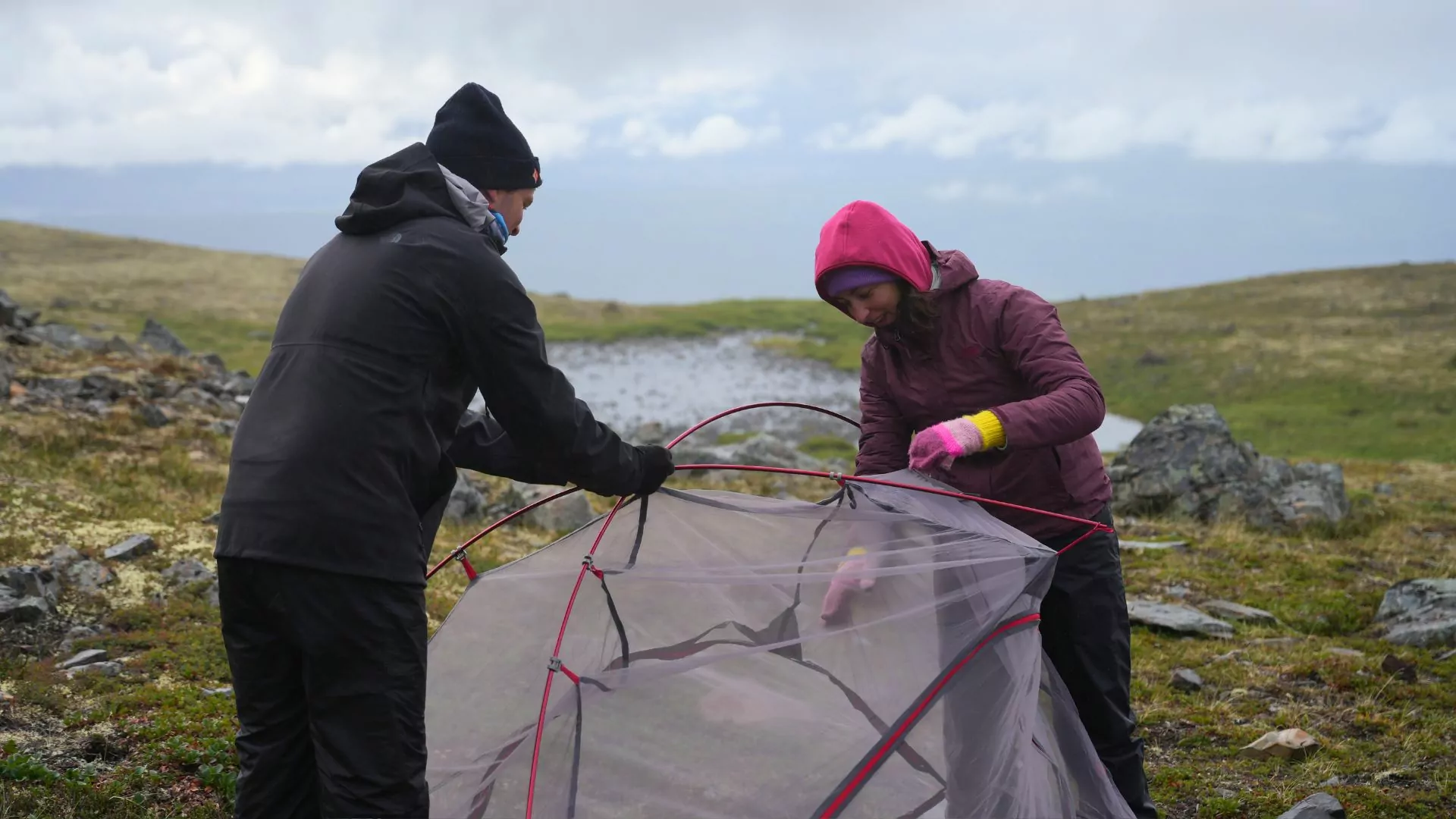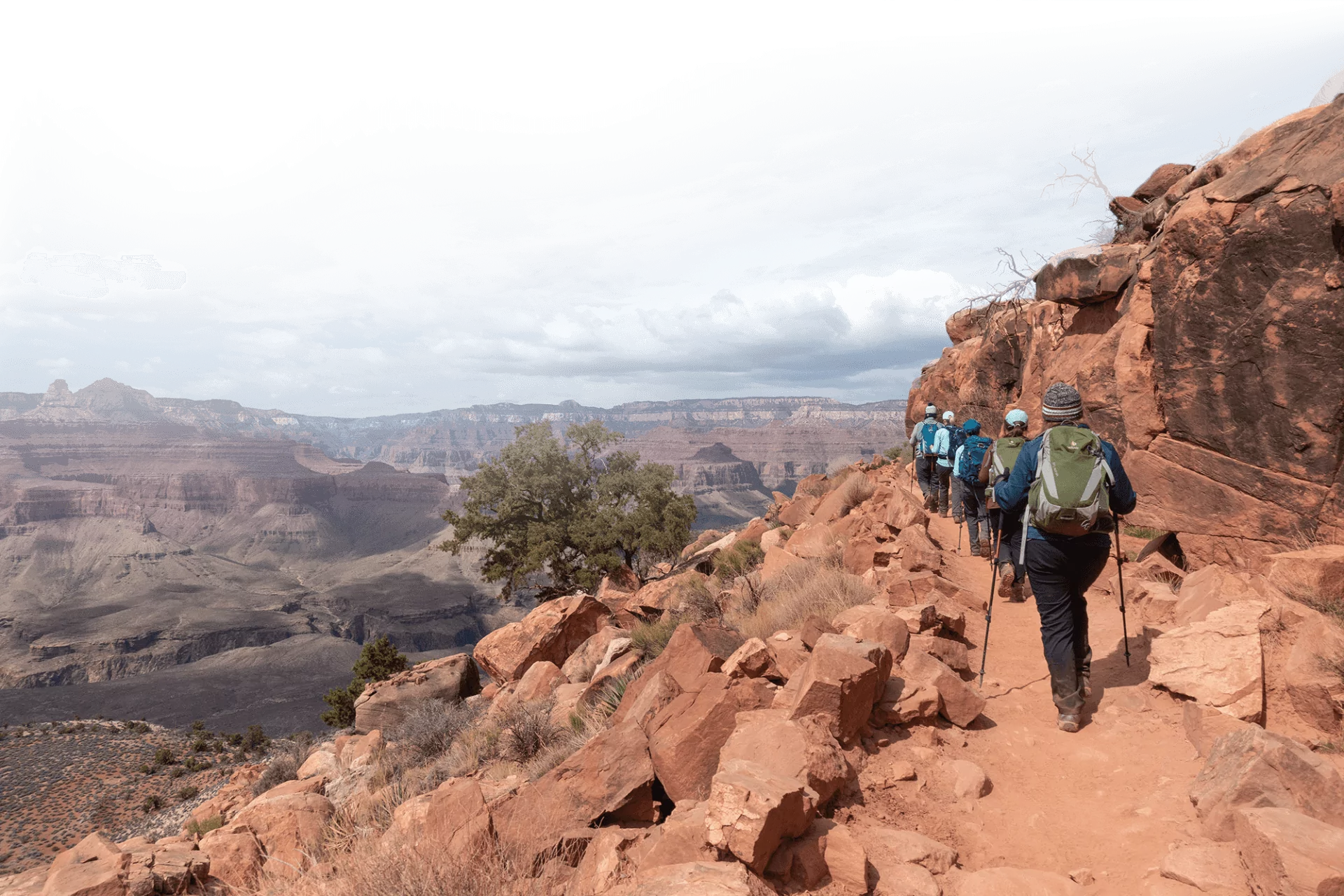What to Know about Wilderness Camping
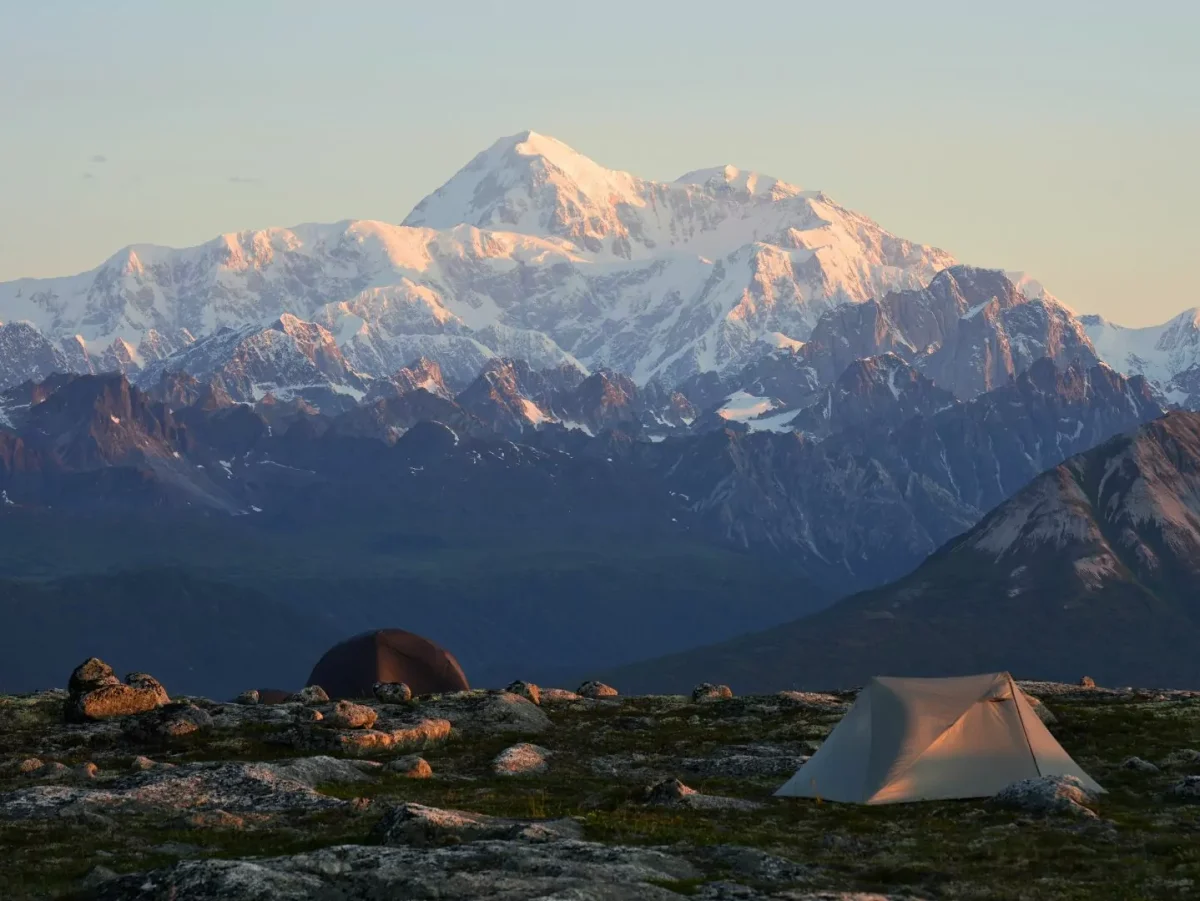
Have you wanted to go wilderness camping but been unsure of where to start? You are not alone! I have guided hundreds of people on backpacking trips over many years and it is very common for people to want to overnight outside and simply not know how.
I didn’t camp in the wilderness until I was in my mid-20s, though I had heard about it years prior and been immediately enticed. It took some time before I met the right friends who were gracious enough to show me the ropes. Now, knowing how much it has changed my life, I only wish I had started sooner.
What do you need to know about planning these types of overnight trips in the backcountry? This is for you!
Planning Your Trip
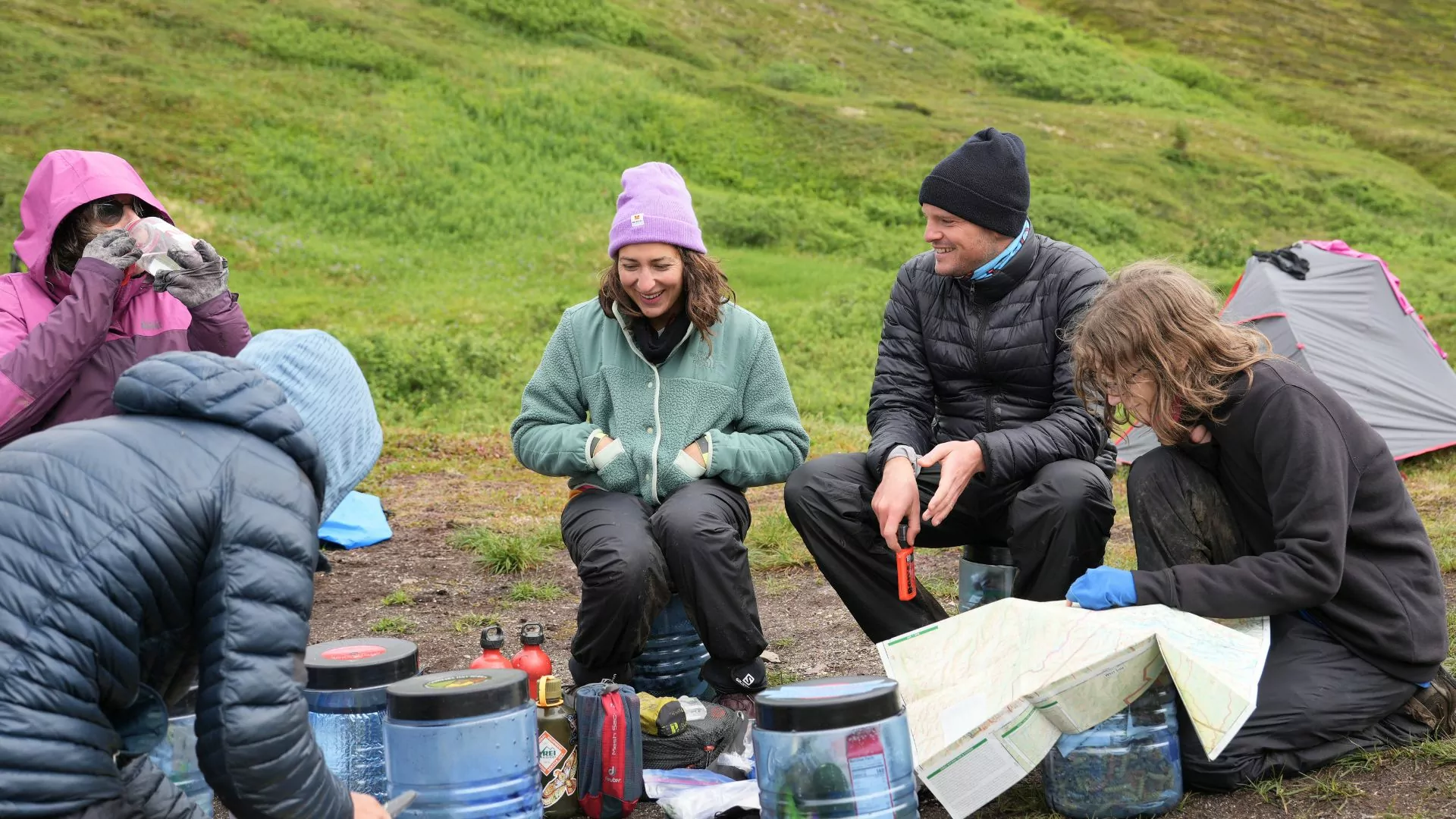 The first step is choosing where you want to go! This can be a bit overwhelming, but only because there are SO MANY incredible places out there that it can be hard to just pick one. Luckily, we have incredible information at our fingertips. Out of all the wilderness camping considerations, this one is the most fun. Grab a cup of tea, a cozy blanket, and start with the intention of browsing trails online. Follow what excites you the most.
The first step is choosing where you want to go! This can be a bit overwhelming, but only because there are SO MANY incredible places out there that it can be hard to just pick one. Luckily, we have incredible information at our fingertips. Out of all the wilderness camping considerations, this one is the most fun. Grab a cup of tea, a cozy blanket, and start with the intention of browsing trails online. Follow what excites you the most.
If you end up loving wilderness camping, that first trip surely won’t be your last and you’ll get to explore the rest.
THINK LOCAL
If it is your very first trip, it may be best to choose a local trail. That way you can walk into your local gear shops and surely be able to get firsthand knowledge on the trip. Hopefully someone will even help you locate the best wilderness camping spots along the trail! I love when someone can point to an exact spot on a map and say “THIS is the best spot to set up camp. The views are amazing, you have water right ‘here’ and it’s far less crowded than up ahead.”
That being said, always cross-reference what is suggested to you and have a back-up plan in case your first plan doesn’t work out. Conditions, especially with water, are always changing, and so are the rules and regulations. Another perk of going local is that you know the area. You are familiar with the climate, plants and animals, and have a general lay of the land.
CONSIDER HIRING A GUIDE
If you decide you want to finally take that trip to that bright blue lake in the middle of the mountains, but have never been to that type of ecosystem before, this is a great reason to hire a guide. You will learn so much about the flora and fauna, the history, and, most importantly, how to hike and camp safely and responsibly there. Then, the next time you want to disappear into the mountains for a few days, you’ll feel much more equipped and comfortable. You may even start building your own community of hiking partners by joining that guided trip. It’s awesome to get out there with like-minded people who you would never have met otherwise.
Getting Out There
LEAVE NO TRACE
We all need to do our part when it comes to protecting our public lands. With increased visitation, it is more important now than ever to pay attention to the impact we are having. This is a major wilderness camping consideration, and we should all refer to these principles with everything we do in the backcountry.
7 Principles of Leave No Trace:
- Plan Ahead & Prepare
- Travel and Camp on Durable Surfaces
- Dispose of Waste Properly
- Leave What You Find
- Minimize Campfire Impact
- Respect Wildlife
- Be Considerate of Others
For a detailed explanation of each of these, please visit: https://lnt.org/why/7-principles/
BEAR PRECAUTIONS
If I am being honest, I used to be really afraid of bears (especially Grizzlies) when I first started to camp in the wilderness. I even went as far as hiking out of the backcountry 2 days early once because I was so nervous and I couldn’t relax! Now, I work in grizzly-country in the summers and feel so lucky every time I get to see one (from a safe distance). They are extremely beautiful animals and an integral part of the ecosystems they inhabit. It’s important to remember that we are visiting their home.
If you will be camping in the wilderness, an imperative consideration is how you should be prepared to safely store your food. Will your site have an established food-hanging pole or a bear-proof locker? If not, are there adequate trees where you are camping and do you have the necessary skills and supplies to be able to set up a food hang? If not, do you have an approved bear resistant food container?
Even very experienced backpackers who have never been in grizzly territory sometimes choose to hire a guide for their first time. It is definitely possible to do your own thorough research and be safe and prepared, but it is a lot easier to not accidentally miss something when you go with an expert.
KNOW THE RECENT CONDITIONS
One of the most important wilderness camping considerations is current conditions. Follow the weather in the area for at least a couple weeks prior to your trip. Weather can change quickly and drastically, so be prepared for a realistic range regardless of the forecast. With that said, knowing the recent weather trend can help you plan for the types of conditions you might experience. A big mistake that many people make is not considering how the elevation changes during their trip will greatly affect the conditions and temperatures.
Much of the world is in a state of drought, so it is vital that you get recent water conditions. If the water is unreliable, plan to carry enough water to make it back to your last known source in case it is not where you had hoped. Or on the other side of things, do you have any river crossings? How deep and swift is the water? Sometimes I repeat the same trail multiple times in a season, and I have been shocked time and time again when seeing how drastically the water levels fluctuate from spring to fall.
Know if there are any fire restrictions in place and please always err on the side of extreme caution. Even if there are no restrictions in place, still don’t burn if it’s windy. Check the integrity of the fire ring and have water nearby in case something unexpected happens. Don’t leave it unattended. Drown it out with water until it is cool to the touch—coals can easily reignite.
Trail conditions can change and closures can be enacted at any time. I like to check trail conditions the evening before my trip starts, just to be sure nothing has changed. Reading recent trail reviews on popular sites such as AllTrails is also very helpful as a starting point for research.
Know Before You Go
KNOW THE REGULATIONS
Start by doing a simple search of the trail that you’d like to do. What type of land is it? National Park, National Forest, National Monument, National Recreation Area? Each type of land has a specific set of rules and regulations in order to protect it for its intended use. Finding out what type of land designation you are on is imperative, and it will also help you determine if you need a permit and where to get it.
What is the difference between a National Park, a National Forest, and a Wilderness Area? National Parks are more heavily managed. They receive a large number of visitors every year, and so there is development to consolidate the usage and also protect the resources. There is no hunting, logging, or grazing allowed in a National Park, but there are hotels, gas stations, restaurants, popular hiking trails, designated camping areas. Every National Park manages things differently, but assume that a permit is required to go wilderness camping.
National Forests, on the other hand, do typically allow multiple uses such as collecting minerals, recreation, logging, hunting, grazing, etc. The natural resources are not as protected, but rather are assessed and used for what is determined to be the most beneficial. Some hikes (usually the most popular ones) can require a backcountry permit, and so it is important to plan ahead. Sometimes it is as simple as filling one out at the trailhead, and other times you may have to enter a lottery many months in advance.
Designated Wilderness Areas are the most protected and can be found within both National Parks and National Forests. These lands were protected with the priority of keeping them unaltered by humans. No mechanized travel or motors are allowed and humans are seen as only visitors.
Knowing the rules and regulations for the exact trail you want to hike is the first step, but knowing who manages the trail will help you figure out who to call or email for further specific information.
PERMITS
This can be confusing and sometimes a bit frustrating, but don’t let it detour you! Don’t give up if you don’t get your first choice. There are probably spectacular, lesser-known (and therefore typically quieter) trails surrounding the one you were gunning for. I can’t tell you how many times I ended up being so grateful that I didn’t get my first pick.
One huge perk of going on a guided trip is that you don’t have to figure out these logistics. Sign up for a trip and let a company like Wildland Trekking take care of the rest. Even commercial companies have to go through the permitting process though, so while it’s not a guarantee you’ll be able to get your first choice trip with them either. If that happens, you end up with the expertise of an Adventure Consultant to help you pick the runner-up that will end up being the trip of a lifetime!
Where to Wilderness Camp
I could write at least 10 more articles just describing some of my favorite wilderness camping areas, and my personal list of trips I am itching to do just keeps getting longer. That’s one of my favorite things about wilderness camping—the inspiration is never-ending and learning to camp and travel in the backcountry opens up a whole new world of possibilities! I tried to include a variety from National Parks to National Monuments to Wilderness areas.
COYOTE GULCH
Grand Staircase-Escalante National Monument, UT 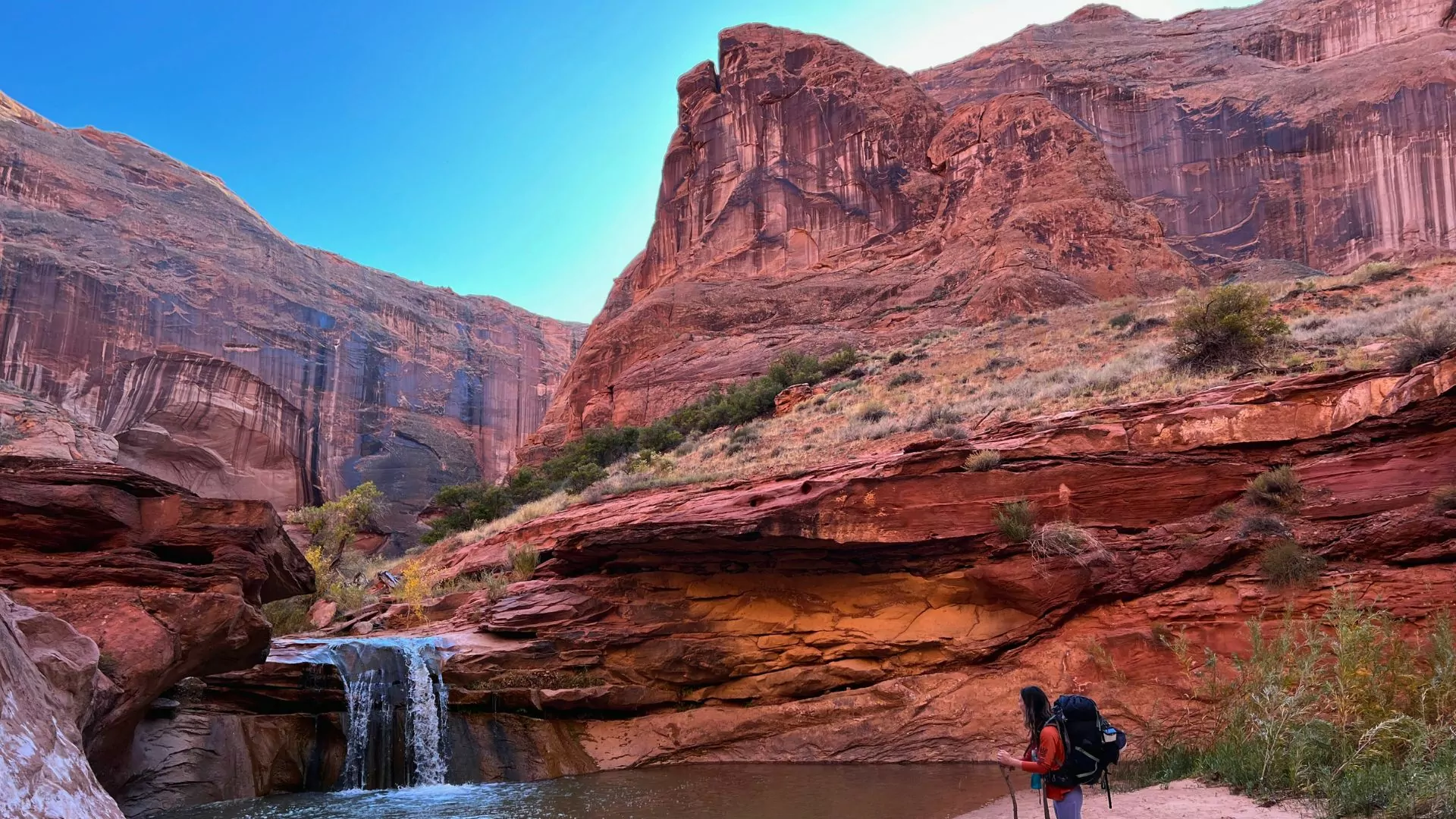 Coyote Gulch is one of my all-time favorite backpacking trips. It is within the Glen Canyon National Recreation Area in Southeastern Utah, located just outside of the super cute (and tiny) town of Escalante, UT. The beauty of these wilderness campsites is unsurpassed. Imagine camping under massive natural bridges, near waterfalls and babbling creeks, and never being too far from a shimmering waterfall. This is a very popular trail especially in the Spring and Fall, as desert trails with easy access to the water usually are. For better or worse, it still has an easy, unrestricted permitting system that doesn’t cap the number of people out there. Just fill one out at the Trailhead and you are good to go. Be mindful of poison ivy and flash floods, pack out your human waste using a portable toilet system (yes, that means your poop), and make sure you have the right vehicle for the road conditions to access the Trailhead. If you can set up a car shuttle for yourself, my favorite way to do this hike is to start at Red Well Trailhead and end at Crack-in-the-Wall.
Coyote Gulch is one of my all-time favorite backpacking trips. It is within the Glen Canyon National Recreation Area in Southeastern Utah, located just outside of the super cute (and tiny) town of Escalante, UT. The beauty of these wilderness campsites is unsurpassed. Imagine camping under massive natural bridges, near waterfalls and babbling creeks, and never being too far from a shimmering waterfall. This is a very popular trail especially in the Spring and Fall, as desert trails with easy access to the water usually are. For better or worse, it still has an easy, unrestricted permitting system that doesn’t cap the number of people out there. Just fill one out at the Trailhead and you are good to go. Be mindful of poison ivy and flash floods, pack out your human waste using a portable toilet system (yes, that means your poop), and make sure you have the right vehicle for the road conditions to access the Trailhead. If you can set up a car shuttle for yourself, my favorite way to do this hike is to start at Red Well Trailhead and end at Crack-in-the-Wall.
HERMIT LOOP
Grand Canyon National Park, AZ
When people talk about wilderness camping in Grand Canyon, they typically jump right to the iconic Rim-to-Rim Trail. It is spectacular, but personally, I think the Hermit Loop is better. I prefer to hike this one from Bright Angel Trail, camping at Havasupai Gardens, Monument Creek, Granite Rapids, and then Hermit Creek. Granite Rapids is a campsite along the mighty Colorado River, but if you wanted to shorten the trip or couldn’t get a night there, my favorite part of this trip is that you have 2 solid opportunities to “day hike” a short distance (1.5 miles each way) to reach the river from one of your other camps. You definitely don’t want to miss spending a little time next to the force that shaped the Grand Canyon.
Wilderness camping considerations on this trip are weather and extreme elevation gain/loss. Most people don’t initially realize that weather on the rim is about 20 degrees cooler than the inner-canyon! Permits can be challenging to get, but not near as challenging as the main corridor (where the rim-to-rim takes place). They are secured through recreation.gov which operates a lottery system that takes place 6 months prior to your trip. Don’t forget to bring a “rat sack” or rodent-proof container for all of your food and smelly items!
TITCOMB BASIN
Bridger Wilderness, WY
This trail is located in the Wind River Range in the Bridger Wilderness Area within the Bridger-Teton National Forest. This landscape is absolutely covered in pristine alpine lakes that are surrounded by epic jagged mountain peaks. This is a recipe for some of the most insanely beautiful wilderness campsites you’ll ever see. Some of my favorite lakes to camp at along the route are Hobbs Lake and Island Lake, the latter from which you can “day hike” to Titcomb Basin before reversing your route.
Wilderness camping considerations on this trip include that it is at high elevation (acclimating and drinking lots of water are important!) and the trail is only accessible during the summer months after the snow has melted (usually not until July) and before the first snow falls again (sometimes in September). The Winds are in bear country, so it is vital to store your food properly. The pine trees are very difficult to hang food properly on, so it is far better to bring an approved Bear Canister instead. This is another trail that only requires a permit to be filled out at the trailhead, so can potentially be very busy!
Guided Titcomb Basin Llama Trek
Taking The First Step
When trying to figure out how to wilderness camp, the main objective is to have fun! Try to enjoy the process of learning something new. Do a test run in your backyard. Convince a friend to join you. Sign up for an Intro to Backpacking class. Join a guided trek. There are so many resources to help get you started, but just try to enjoy the process! When you’re finished with your first wilderness camping trip, you’ll be so thankful you followed through and learned a skill that can take you as far as your curiosity can wander. Hope to see you out there!
Once you’ve picked a trail and thought about these main wilderness camping considerations, it’s time to start gathering your gear and learning how to pack! Check out these other Wildland Blogs to help get you started:



